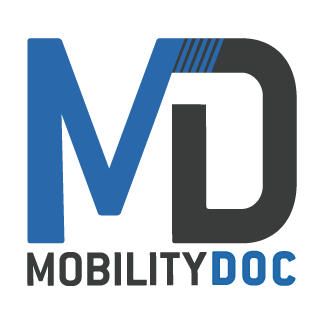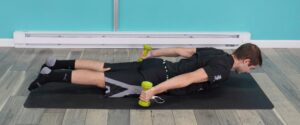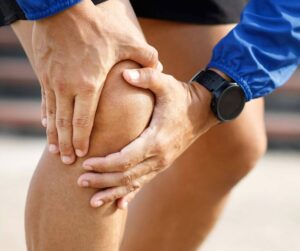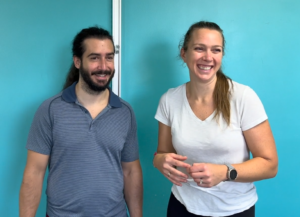For runners dealing with deep discomfort around the sit bone, high hamstring tendinopathy is a condition that can quietly build. It starts interfering with training—and then takes you out of it entirely. It’s common, but often misunderstood, and sometimes even misdiagnosed.
Let’s break down what high hamstring tendinopathy is, why runners are especially prone to it, and what to do if you’re experiencing symptoms.
What Is High Hamstring Tendinopathy?
High hamstring tendinopathy is irritation at the point where the hamstring tendon attaches to the ischial tuberosity—or the sit bone. This condition typically develops over time due to repetitive stress. This makes runners particularly vulnerable considering they take the same steps thousands of times!
The pain tends to be deep and localized, often showing up during or after a run. Left unaddressed, it can become persistent, limiting performance and even getting in the way of normal life.

How Did I Get High Hamstring Tendinopathy?
In many cases, this type of tendinopathy results from a combination of overuse, poor movement mechanics, and muscular imbalances. Some of the most common contributing factors include:
- Weak or underactive glutes
- Tight hip flexors and/or hamstrings
- Poor running form
- Inadequate warm-up and recovery routines
Tight hamstrings combined with tight hip flexors means you’re not able to fully extend your hips. Limited hip extension leads to not being able to use your glutes properly. That means your hamstrings are taking the brunt of the work away from your glutes. Over time, this leads to excessive and repetitive strain at the tendon attachment point.
The Right Approach
One of the most important things to understand about high hamstring tendinopathy is that static stretching is not the solution. In fact, static stretching can make symptoms worse. There is already a lot of tension from tight muscles pulling on the tendon. By increasing tension you will only further irritate it. If we can say one thing… don’t ignore hamstring tightness!
A more effective approach involves:
- Progressive strengthening – especially targeting the hamstrings and glutes
- Dynamic movements to prepare the body before running
- Mobility work – including foam rolling and myofascial release to reduce muscle tightness
- Strategic tendon loading guided by a physical therapist to restore resilience without overloading the area
High Hamstring Tendinopathy Exercises
Rehab should address not just the hamstrings, but also the glutes and adductors—all of which attach at the ischial tuberosity. These exercises help build strength, improve mobility, and support healthy fascia and muscles.
1 - Active Release with a Ball
 Use a lacrosse or massage ball to apply gentle pressure through the hamstrings. This helps release tension and improve tissue mobility.
Use a lacrosse or massage ball to apply gentle pressure through the hamstrings. This helps release tension and improve tissue mobility.
2 - Foam Rolling Glutes and Adductors
 We know it’s your hamstring, but like we just said all 3 muscles attach there. Releasing tightness in the glutes and inner thighs can reduce strain around the sit bone and improve how the muscles share load.
We know it’s your hamstring, but like we just said all 3 muscles attach there. Releasing tightness in the glutes and inner thighs can reduce strain around the sit bone and improve how the muscles share load.
3 - Hip Thrusts
 We need to wake up those glutes and activate them. Hip thrusts allows us to do that while also fully extending through the front of the hip.
We need to wake up those glutes and activate them. Hip thrusts allows us to do that while also fully extending through the front of the hip.
4 - Kickstand Romanian Deadlifts (RDLs)
 A great way to build hamstring strength, length, and stability through a controlled range of motion, without overloading the area.
A great way to build hamstring strength, length, and stability through a controlled range of motion, without overloading the area.
These exercises are a great framework for you to begin with. We are all different and our bodies move differently! What works for some doesn’t work for all. Start with these exercises for 4-6 weeks to see how you progress.
Watch Our High Hamstring Tendinopathy Video
A Common Misdiagnosis: It Might Not Be Your Hamstrings
It’s important to note that some cases of deep glute pain that seem like high hamstring tendinopathy may actually be gluteal tendinitis. The symptoms can be very similar and the two diagnoses have a lot of overlapping qualities. The treatment approaches are similar… but not the same.
If you’ve been addressing your hamstrings and not seeing improvement, it may be worth taking a slightly different approach. We’ll be covering gluteal tendinitis in more detail in another blog coming soon!
Consistency Counts
High hamstring tendinopathy can be a frustrating setback, especially for runners. The key is addressing it early and most importantly being consistent. A well-rounded plan including targeted strength work, proper warm-up habits, and attention to mobility and tissue health can get you fully healed. Notice we say fully healed! If this keeps coming back, you may need to rethink your tactics.
Working with the right physical therapist can help identify issues specifically for you. Then they’ll be able to guide you through a progressive, individualized rehab process.
If you’re navigating this kind of injury, you’re not alone—and there is a path forward. If you have any questions don’t hesitate to reach out on our socials! You can always schedule an in person or virtual consultation for a personalized assessment.
Your Hips Don't Lie
High hamstring tendinopathy isn’t your issue? Your hips are just feeling impossibly tight and even starting to creep into back pain…
Try using MDRx Hips as your solution. This 4 week program is the perfect combination of lower body flexibility, stability, and strength work that it can help with hip, low back, and knee issues!





